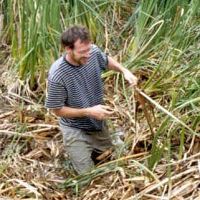Fellows & Goulden, 2016
Mapping and understanding dry-season soil water drawdown by California montane vegetation
Fellows, A.W. and Goulden, M.L. (2016)
Ecohydrology Cross-CZO
-
Reynolds, Sierra, INVESTIGATOR, COLLABORATOR
-
Sierra, INVESTIGATOR
Abstract
The ability of soil to supply plant available water during dry periods is a poorly understood but critically important ecosystem property that affects vegetation health and regional hydrology. We estimated and analyzed the cumulative dry-season drawdown of soil water across montane California using a spatially-resolved water-balance model that combined field, meteorological and remote-sensing observations. Dry-season soil water drawdown varied markedly with elevation, increasing from <200 mm yr-1 below 500 m, to ~425 mm yr-1 at 1000 to 2000 m, before decreasing to <200 mm yr-1 above ~3000 m. Soil water drawdown was comparatively low at drier (Mean Annual Precipitation <1000 mm yr-1) or colder (Mean Annual Temperature <4 °C) locations; soil water drawdown was greater at wetter and warmer locations, including conifer forests. The reduced soil water drawdown at low-elevation dry locations may reflect inadequate precipitation to recharge the soil; the reduced water drawdown at high, cold locations presumably reflects limited storage capacity or sparse vegetation development. Soil water drawdown was reduced at locations that were glaciated during the Pleistocene, and was only weakly related to rock type. The amount of soil water drawdown implies that many California ecosystems are deeply rooted, with conifer forest rooting to at least 3.6 m. Deep rooting allows many California ecosystems to limit current summer moisture limitation, and suggests some of these ecosystems may be able to also limit future increased moisture stress with climate warming if they are able to support increased evaporative demand by further tapping belowground moisture.
Citation
Fellows, A.W. and Goulden, M.L. (2016): Mapping and understanding dry-season soil water drawdown by California montane vegetation. Ecohydrology. DOI: 10.1002/eco.1772
Explore Further

